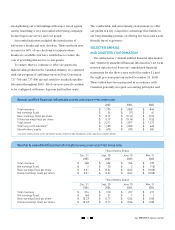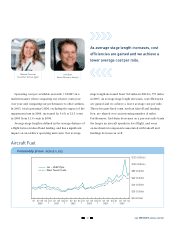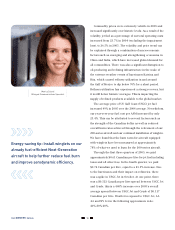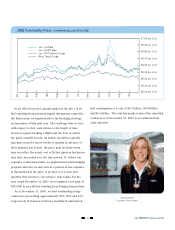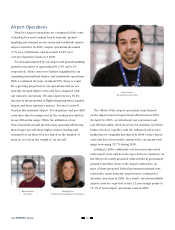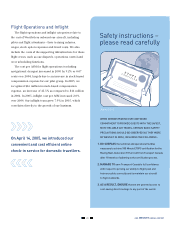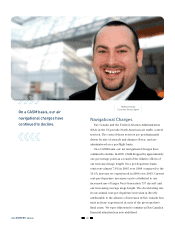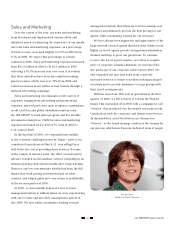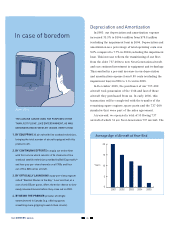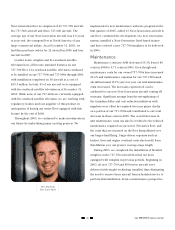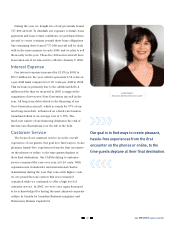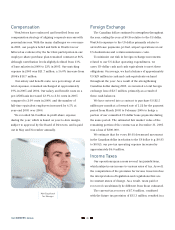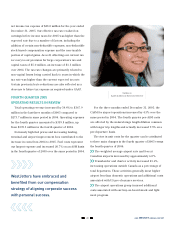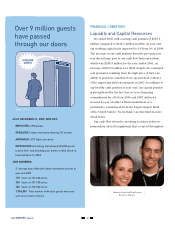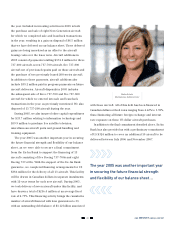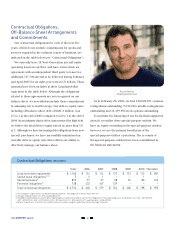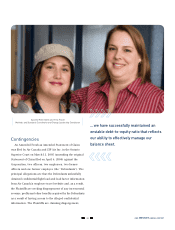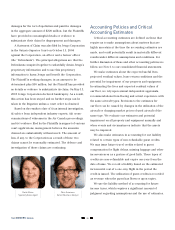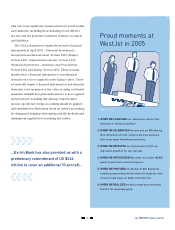Westjet 2005 Annual Report Download - page 27
Download and view the complete annual report
Please find page 27 of the 2005 Westjet annual report below. You can navigate through the pages in the report by either clicking on the pages listed below, or by using the keyword search tool below to find specific information within the annual report.
2005 WESTJET ANNUAL REPORT
25
implemented a new maintenance software program in the
first quarter of 2005, added 15 Next-Generation aircraft to
our fleet, continued the development of a new reservation
system, installed a Next-Generation fixed-based trainer
and have ordered a new 737-700 simulator to be delivered
in 2006.
Maintenance
Maintenance costs per ASM decreased 19.3% from 0.88
cents in 2004 to 0.71 cents in 2005. Even though unit
maintenance costs for our owned 737-700s have increased
21.6% and maintenance expenses for our 737-700 leased
aircraft increased 11.1% year over year, our total maintenance
costs decreased. The increases experienced can be
attributed to our new Next-Generation aircraft coming off
warranty. Significant savings from the strengthening of
the Canadian dollar and cost reduction initiatives with
suppliers were offset by required two-year phase checks
on a portion of our 737-700s and contributed to our total
decrease in these costs in 2005. The overall decrease in
unit maintenance costs can also be credited to the reduced
maintenance required on our newer 700-series fleet, and
the costs that are incurred on the fleet being diluted over
our longer-haul flying. Usage-driven expenses such as
brakes, tires and engine overhaul costs also benefit from
this dilution over our greater average stage length.
During 2005, we completed the installation of blended
winglets on the 737-700 aircraft that had not been
equipped with winglets in previous periods. Beginning in
2005, all new 737-700 and 800-series aircraft were
delivered with winglet technology installed, thus eliminating
the need to remove these aircraft from scheduled service to
perform this installation. From a maintenance perspective,
Chris Chaikosky
Sales Super Agent
Next-Generation fleet is comprised of 43 737-700 aircraft,
five 737-800 aircraft and three 737-600 aircraft. The
average age of our Next-Generation aircraft was 2.0 years
at year-end, the youngest fleet in North America of any
large commercial airline. As at December 31, 2005, we
had firm purchase orders for 12 aircraft in 2006 and four
aircraft in 2007.
Leather seats, winglets and live seatback satellite
television have all become standard features on our
737-700 fleet. Live seatback satellite television continued
to be installed on our 737-700s and 737-800s through 2005,
with installation completed on 30 aircraft at a cost of
$19.3 million. In total, 45 of our aircraft were equipped
with live seatback satellite television as at December 31,
2005. While none of our 737-600s are currently equipped
with live seatback satellite television, we are working with
regulatory bodies and our supplier of this product in
anticipation of having our entire fleet equipped with this
feature by the end of 2006.
Throughout 2005, we continued to make investments in
our future by undertaking many exciting projects. We


